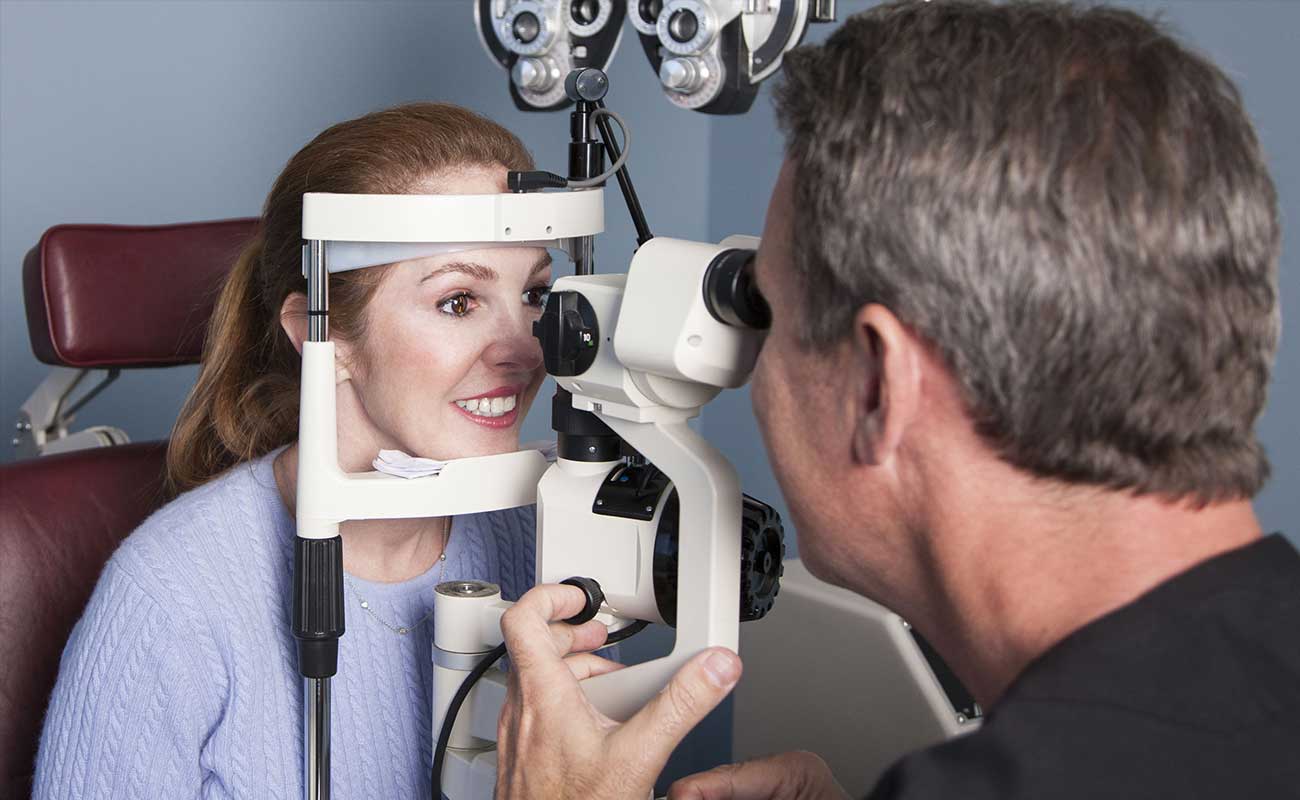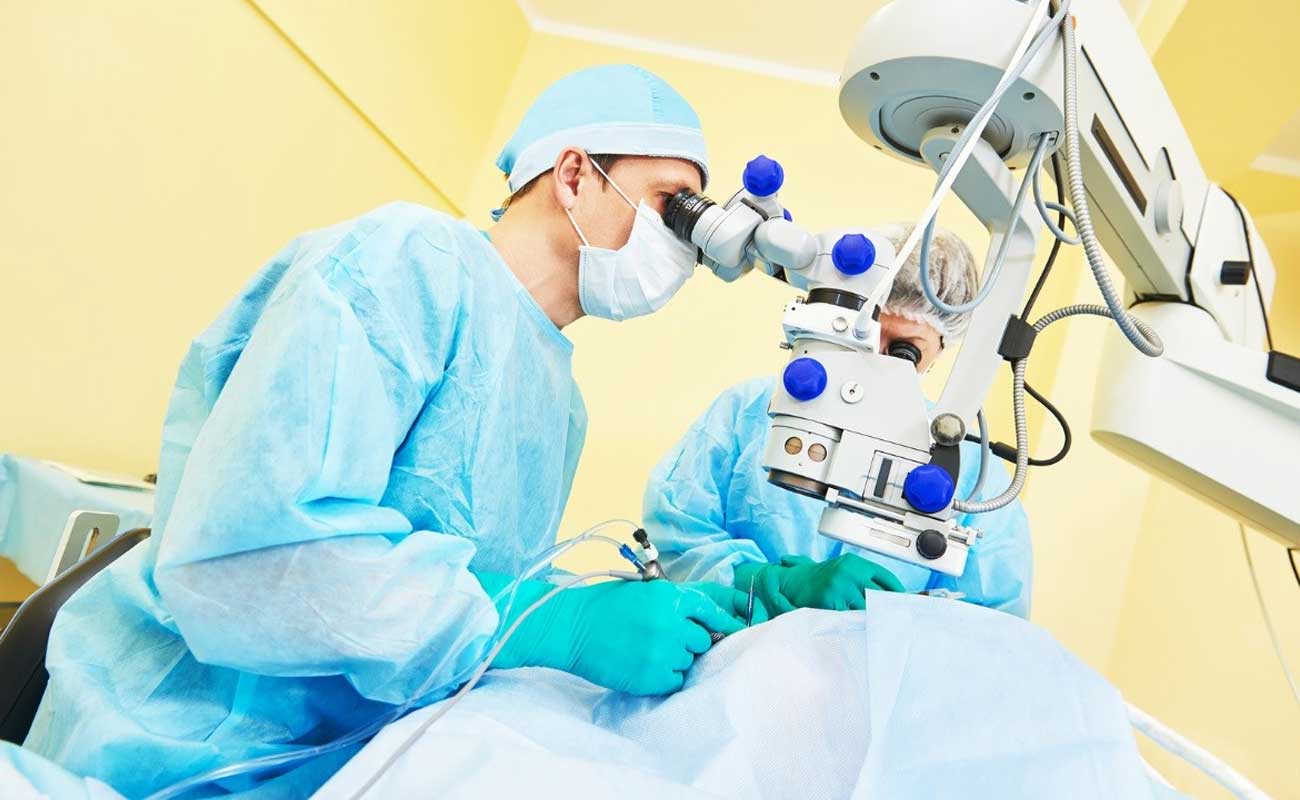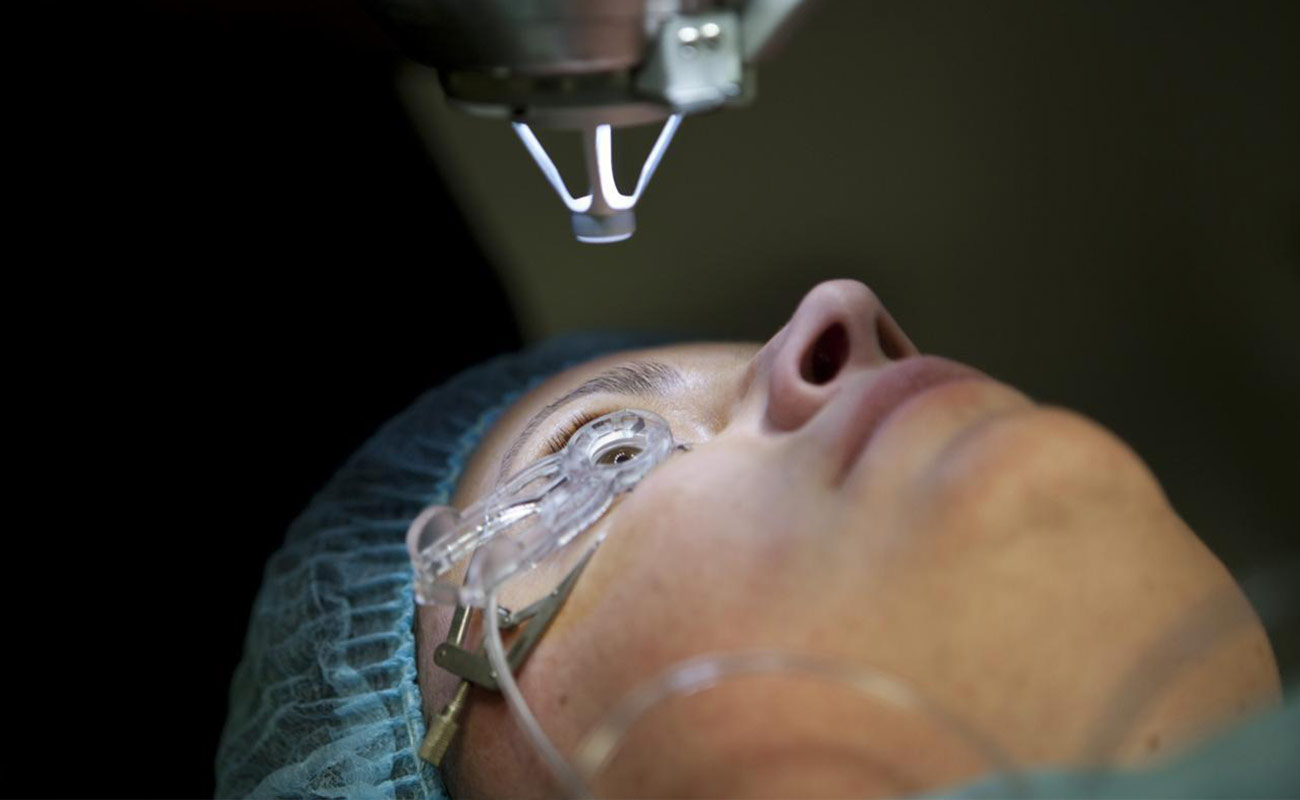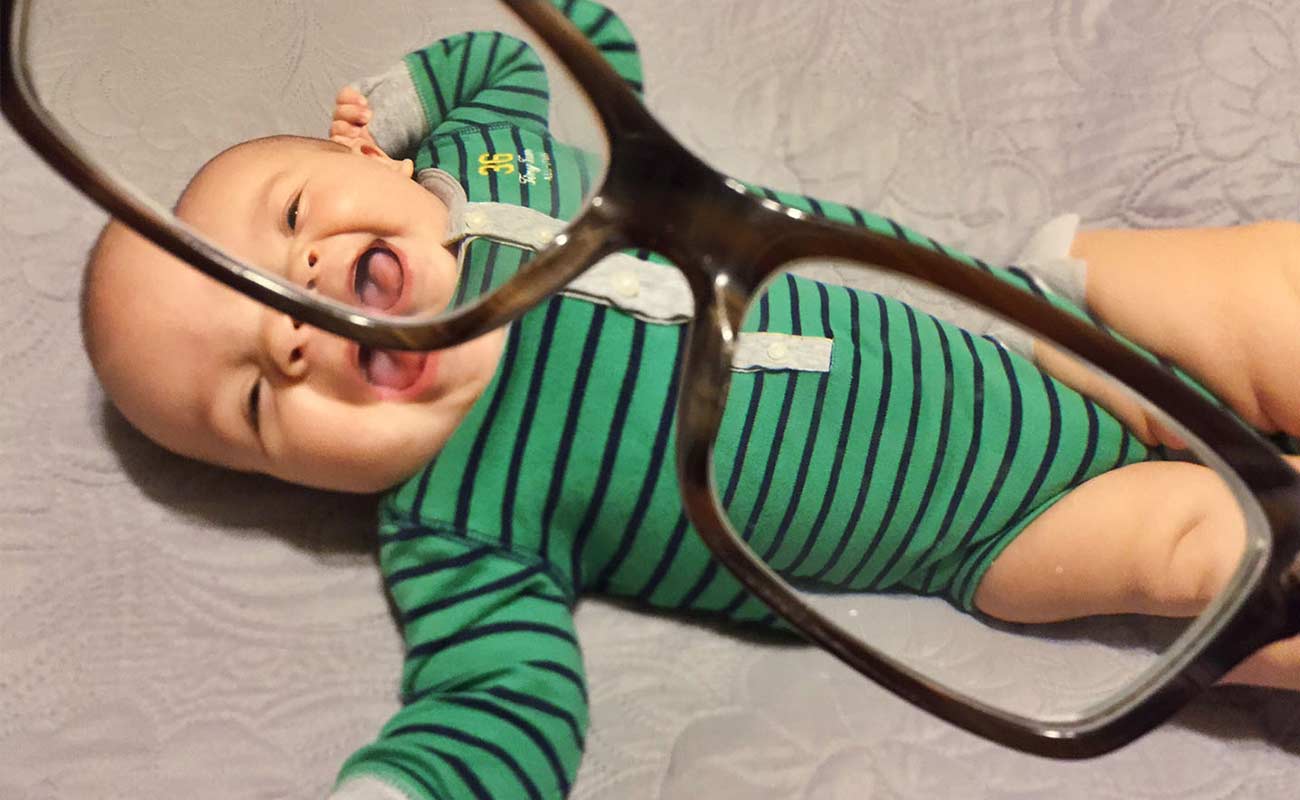LASIK (laser-assisted in situ keratomileusis) is an outpatient refractive surgery procedure used to treat nearsightedness, farsightedness and astigmatism. A laser is used to reshape the cornea — the clear, round dome at the front of the eye — to improve the way the eye focuses light rays onto the retina at the back of the eye.

With LASIK, an ophthalmologist creates a thin flap in the cornea using either a blade or a laser. The surgeon folds back the flap and precisely removes a very specific amount of corneal tissue under the flap using an excimer laser. The flap is then laid back into its original position where it heals in place.
Not everyone is a candidate for laser eye surgery. A series of conditions and anatomical factors can aggravate the risk of undesirable outcomes or limit optimal laser eye surgery outcomes. You may be unsuitable for laser eye surgery due to the following factors:
First, your eye surgeon uses either a mechanical surgical tool called a microkeratome or a femtosecond laser to create a thin, circular "flap" in the cornea.
The surgeon then folds back the hinged flap to access the underlying cornea (called the stroma) and removes some corneal tissue using an excimer laser.
This highly specialized laser uses a cool ultraviolet light beam to remove ("ablate") microscopic amounts of tissue from the cornea to reshape it so it more accurately focuses light on the retina for improved vision.

For nearsighted people, the goal is to flatten the cornea; with farsighted people, a steeper cornea is desired.
Excimer lasers also can correct astigmatism by smoothing an irregular cornea into a more normal shape. It is a misconception that LASIK cannot treat astigmatism.
After the laser reshapes the cornea, the flap is then laid back in place, covering the area where the corneal tissue was removed. Then the cornea is allowed to heal naturally.
Laser eye surgery requires only topical anesthetic drops, and no bandages or stitches are required.
As with any surgery, LASIK eye surgery carries risks, including:
You may need another refractive surgery (enhancement surgery) within a year to remove more tissue.
Even when a good visual result is measured under standard testing conditions, your vision in dim light (such as at dusk or in fog) may be reduced to a greater degree after the surgery than before the surgery.
Your eye doctor might recommend that you use eyedrops during this time. If you experience severe dry eyes, you could opt for another procedure to get special plugs put in your tear ducts to prevent your tears from draining away from the surface of your eyes.
The outermost corneal tissue layer (epithelium) may grow abnormally underneath the flap during the healing process.
Conditions that increase risks
Certain health conditions can increase the risks associated with LASIK surgery or make the outcome less predictable. Doctors may not recommend laser surgery for you if you have certain conditions.
These conditions include:

LASIK may not be advisable if you:
If you're considering LASIK eye surgery, talk to your doctor about your questions and concerns. He or she can explain how the surgery might benefit you and help put the risks in perspective. Your doctor will discuss with you whether you're a candidate for the procedure.
The side effects and complications are rare. However, here are some of the side effects and complications that have been reported:
Temporary visual disturbances and discomfort: Occurs during the first few days after surgery, and manifests in mild irritation and light sensitivity. Patients have also reported halos and glares especially when driving at night, episodes of dry eyes, hazy vision and reduced acuity of vision. Since these problems are not permanent, they usually disappear within three to six months
Flap complications: Laser eye surgery involves procedures such as LASIK whereby a flap is cut on the front surface of the cornea. The flap is lifted during surgery to allow for corneal reshaping and later replaced using natural bandage.
Dry Eyes: Often reported by patients who have undergone LASIK laser surgery as a result of decreased tear production culminating in eye irritation and vision blurring. Up to half of laser eye surgery patients experience varying levels dry eye syndrome. Being a temporary problem, dry eye syndrome can be corrected by application of eye drops to lubricate the surface of the eyes. As healing continues, dry eye syndrome also disappears.
Remarkable undercorrection, overcorrection or regression: In many instances, side effects of laser eye surgery manifest in the perception of objects in the long term. After laser eye surgery, not all patients will achieve 20:20 vision, and it may still be necessary to use glasses and contacts in some cases. In case the laser removes too much or too little tissue from the cornea, or your eyes’ healing is disturbed, the eventual visual outcome may not be optimal as expected. The less-than-perfect surgical are often as a result of your eyes failing to respond appropriately to laser eye surgery as predicted. Similarly, your eyes may work optimally a few weeks after surgery, but over time you develop regression due to over-healing. Is directly related to
Eye infection: Although rare, laser eye surgeons attest that the likelihood of infections occurring is high in surgeries that use surface ablations such as PRK. By using a natural bandage after surgery, a more sterile environment is created that foster proper healing after eye laser surgery.
Despite the pluses, there are some disadvantages to LASIK eye surgery:
· LASIK is technically complex. Rare problems may occur when the doctor creates the flap, which can permanently affect vision. This is one reason to choose a surgeon who is very experienced at performing these surgeries.
· LASIK can rarely cause a loss of "best" vision. Your best vision is the highest degree of vision that you achieved while wearing your contacts or eyeglasses.
Immediately after the procedure, your eye may burn, itch, or feel like there is something in it. You may experience some discomfort, or in some cases, mild pain and your doctor may suggest you take a mild pain reliever. Both your eyes may tear or water. Your vision will probably be hazy or blurry. You will instinctively want to rub your eye, but don't! Rubbing your eye could dislodge the flap, requiring further treatment. In addition, you may experience sensitivity to light, glare, starbursts or haloes around lights, or the whites of your eye may look red or bloodshot. These symptoms should improve considerably within the first few days after surgery. You should plan on taking a few days off from work until these symptoms subside. You should contact your doctor immediately and not wait for your scheduled visit, if you experience severe pain, or if your vision or other symptoms get worse instead of better.
You should see your doctor within the first 24 to 48 hours after surgery and at regular intervals after that for at least the first six months. At the first postoperative visit, your doctor will remove the eye shield, test your vision, and examine your eye. Your doctor may give you one or more types of eye drops to take at home to help prevent infection and/or inflammation. You may also be advised to use artificial tears to help lubricate the eye. Do not resume wearing a contact lens in the operated eye, even if your vision is blurry.
You should wait one to three days following surgery before beginning any non-contact sports, depending on the amount of activity required, how you feel, and your doctor's instructions.
To help prevent infection, you may need to wait for up to two weeks after surgery or until your doctor advises you otherwise before using lotions, creams, or make-up around the eye. Your doctor may advise you to continue scrubbing your eyelashes for a period of time after surgery. You should also avoid swimming and using hot tubs or whirlpools for 1-2 months.

Strenuous contact sports such as boxing, football, karate, etc. should not be attempted for at least four weeks after surgery. It is important to protect your eyes from anything that might get in them and from being hit or bumped.
During the first few months after surgery, your vision may fluctuate.
Contact your eye doctor immediately, if you develop any new, unusual or worsening symptoms at any point after surgery. Such symptoms could signal a problem that, if not treated early enough, may lead to a loss of vision.
fda.gov, lasereyesurgeryhub.co.uk, mayoclinic.org, aao.org, webmd.com, allaboutvision.com,
Submit Comment